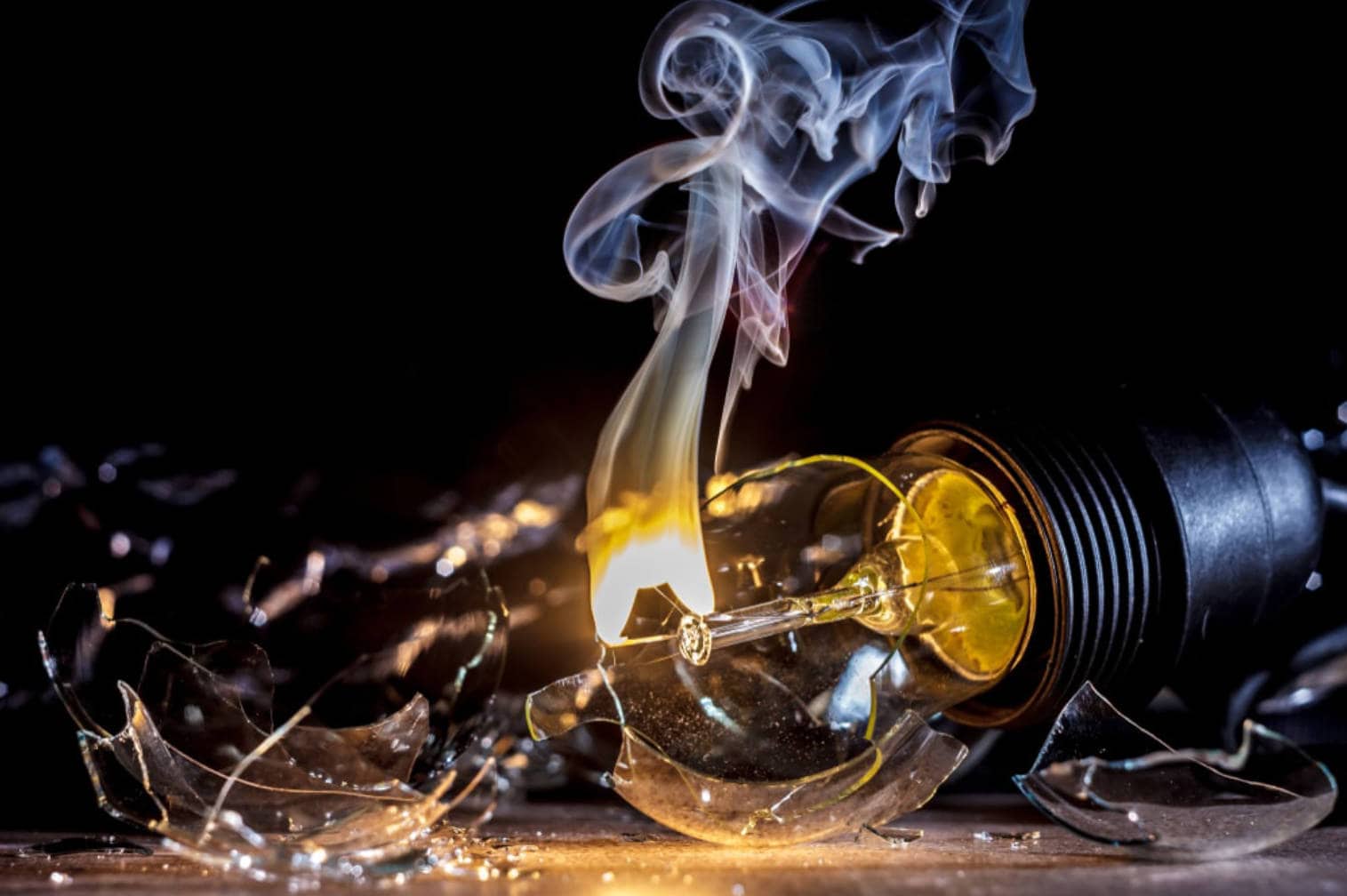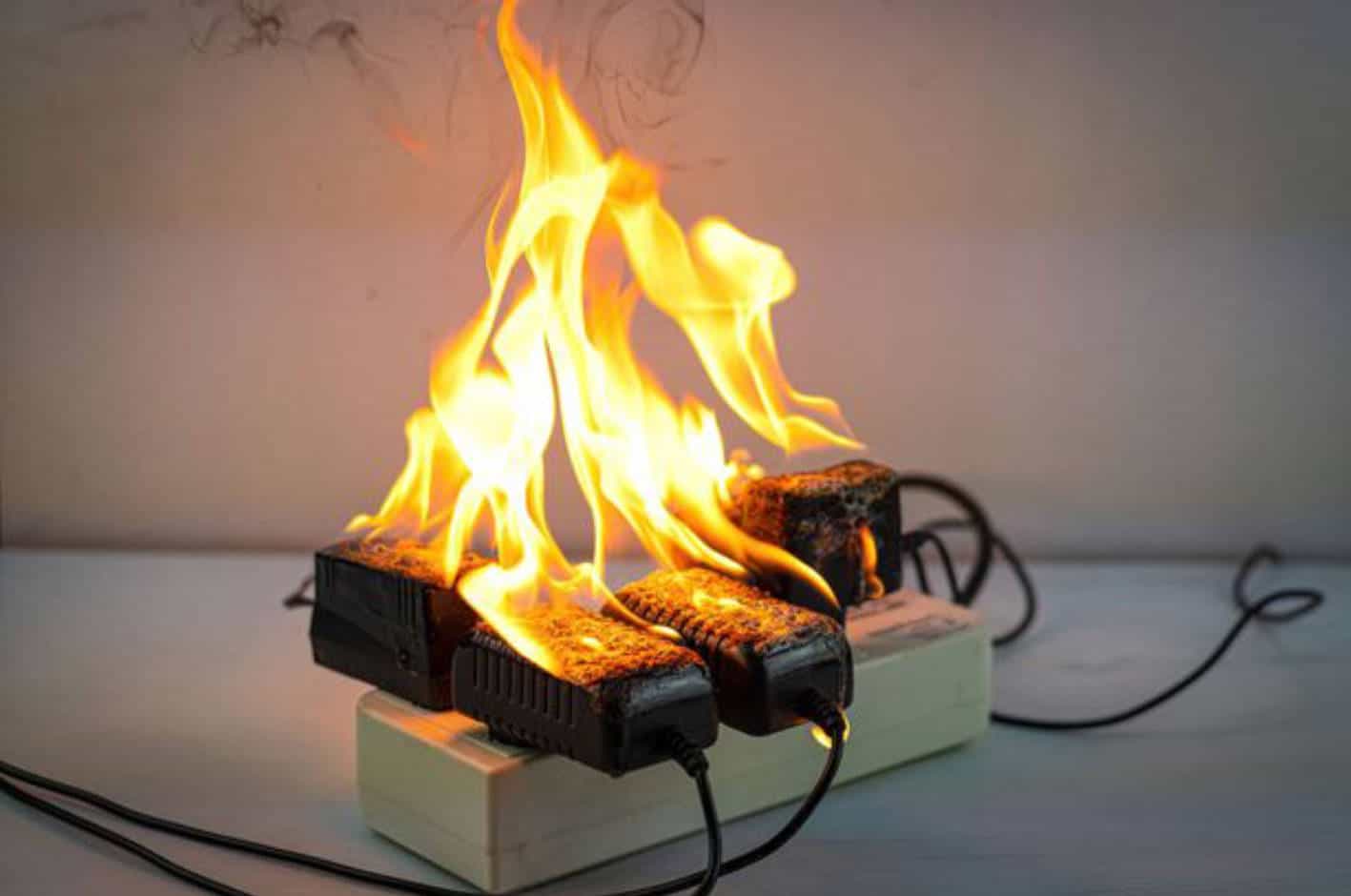LED lights have undoubtedly become the choice of many households across the world. With its market currently valued at $75.81 billion, the sales are forecasted to reach around $160 billion by 2026.
However, many people are still unsure about the safety of LED lights. Can they explode like other flammable lights, such as incandescent bulbs? Or not?
Do LED Lights Catch Fire?
If you use LED lights or you’re looking to start using them, you’ve got to pay attention to this. According to research, fire hazards from electricity are the second cause of deaths worldwide.
But first, what makes a light bulb catch fire? The answers aren’t far-fetched – contact with flammable materials, overheating, and wrong fixtures.
Overheating
The chances of an overheated light bulb catching fire are high. Overheating is common with lights such as fluorescent and incandescent lights.
For example, within 3 minutes of use, incandescent light generates 216°C in terms of temperature, while a LED light bulb barely reaches 33°C within that same timeframe.
On this account, LED lights are less likely to explode since their temperatures aren’t high enough to make them overheat.
Contact with flammable materials
Another reason light bulbs explode is when the high temperatures contact flammable materials.
Imagine how easy it’ll be for an incandescent bulb that reaches 216°C within 3 minutes of use to explode if it’s around materials such as nylons, curtains, wooden chairs and tables, books, etc.
However, LED lights are more complex than other light bulbs because they have an internal driver that regulates the amount of heat. As such, even if they’re around flammable materials, they are less likely to explode.
However, fluorescent and incandescent lights can easily catch fire, unlike LED lights. That said, what makes LED lights non-flammable and more preferred than other lights?
LED Lights
LED lights use 75% less energy than incandescent lights to work. For instance, an 11-watts LED bulb works the same as a 60-watts regular light bulb.
They emit less heat and are less likely to catch fire. High-quality LED lights have internal drivers and capacitors that regulate the heat generated.
Furthermore, LEDs last longer than incandescent and fluorescent lights. For example, they can last up to 50,000 to 100,000 hours, depending on how much you use them. Sometimes, high-quality LEDs last up to 10 years.
While LED lights are non-flammable, energy-efficient, and long-lasting, they aren’t the cheapest option. They cost more than incandescent and fluorescent light bulbs.
However, they’re cost-efficient in the long run. Besides, their prices reduce as more companies make them more affordable and accessible.
In terms of direction, LEDs emit light at 180°. This reduces the energy spent and makes it more concentrated, reducing its contact with the materials around it and chances of exploding.
Nevertheless, it’s not advisable to leave your LED lights on for long, especially when you’re not using them. You’ll reduce the chances of a fire accident and have some money on energy bills.
Incandescent lights
Incandescent bulbs, also called regular light bulbs, use the most energy to work. They have wire filaments that produce electrical power when heated.
However, 90% of this energy comes as heat, making incandescent light bulbs generate heat at 216°C within 3 minutes. Therefore, they are highly flammable.
Regular light bulbs barely last up to 1500 hours. Their lifespan usually doesn’t exceed 1200 hours. As such, you’ll need to buy new lights monthly if you’re using incandescent light.
You can get a regular light bulb for less than $3. It is the cheapest option; however, it’s not cost-effective in the long run because of its flimsy lifespan and its fire hazard.
Regular light bulbs are omnidirectional(360°). They use more energy, making the light scattered and prone to a fire outbreak.
Fluorescent lights
Compact Fluorescent Lightbulbs (CFLs) use 70% less energy than incandescent bulbs. 80% of their energy is transmitted as heat, making them hot enough to break or explode sometimes.
Fluorescent lights have a longer lifespan than regular light bulbs but aren’t as durable as LEDs. They can last for 8,000 hours.
Even though CFLs last up to 8000 hours under the right conditions and are the cheapest after regular light bulbs, they are very likely to explode.
CFLs are also omnidirectional, sharing the same issue with incandescent lights.
Wrong fixtures
Fixing a light bulb in a spot where the wattage is higher than the fixture can make it explode. It makes the wire in the bulb brittle, which can spark a fire within.
That’s why you must hire a professional to help you fix your light bulbs in the right places. Even though LED lights have stronger components than other lights and are less likely to generate excessive heat, you must fix them correctly to avoid any fire hazard.
How About LED Strip and String Lights?
LED strip lights are another type of LEDs you can use to decorate your home and save power. They come in different colors – red, green, blue, etc. and are flexible to handle.
You can tape them to your walls or in places where they can be rarely seen, but the glow adds a soft hue to your home. You can also cut the strip if it’s too long for your use.
Do LED strip lights generate heat? Yes, they do but not enough to catch fire. Generally, LED lights operate on a scale of 30 % to 50% operational efficiency.
That means for a 100-watt LED light, about 40 – 50 watts go into providing energy while the rest is used for heat. Besides, strip lights can’t get hot enough to break their components.
However, this doesn’t mean you should be careless when handling LED strip lights. As mentioned earlier, no type of light is 100% free from fire accidents. Here are tips to help with LED strip lights:
- Buy good-quality lights: it’s advisable to buy LEDs with UL and ETL ratings. Low-standard lights can explode in your face.
- Good installation: be careful when installing your strip lights. Fire outbreaks can occur if you use a wire that’s not suitable for the current of your lights or an inadequate power supply source.
- LED channels: are primarily used to house LED strip lights. Asides making the lights more colorful and look professional, these channels can help reduce heat dissipation, too, thereby reducing the risk of a fire hazard. They also make your lights more versatile and durable.
- Reduce heat: since the strip lights get hot, look for ways to reduce heat. You can do this by using dimmers to adjust brightness and smart switches to minimize the use of light.
Like strip lights, LED string lights are safe to use also. You can leave them on for a long time without the risk of exploding.
However, only high-quality and properly installed ones last. In addition, place the lights in a place with no flammable materials and where air circulates easily to help heat dissipation.
How Do You Work With LED Lights Such That They Don’t Catch Fire?
Even though LED lights are less likely to catch fire due to their composition and quality, you still need to be careful when working with them.
In fact, some experts say that no light sources are entirely safe from fire hazards. Here’s a guide on how to prevent your LED lights from catching fire:
Follow the manufacturer’s instructions
It’s important you follow the manufacturer’s recommendations when using your LED lights. Dont fix them in the wrong places.
For instance, fixing a 120-watt bulb in a place that can only take a 60-watt bulb will likely cause a fire hazard. However, LED bulbs are quite tolerant. They can work in any fixture as long as it provides them with the required wattage.
Fix the LED bulbs correctly
Whether working with LEDs or other light bulbs, ensure you fix them correctly. Screw them tightly in the right place. However, resist the urge to screw them to the point of breaking.
For instance, LED lights don’t really do well with enclosed fixtures, as heat needs to get out of the heat sinks at their bases. LEDs generate heat, too but not as much as other types of lights.
Enclosed fixtures are best suited to regular light bulbs. If you’ll fix LED lights in an enclosed fixture at all, ensure both are compatible. If any joints need to be soldered, don’t delay doing so. Or better still, get a professional to help you.
Buy high-quality LED lights
This is one of the most important things to consider if you don’t want your LED lights to catch fire. A low-quality product can never perform optimally and safely.
Check for a tested manufacturer before you buy your LEDs. Third-party reviews on the internet will help a lot in making your decision. Look out for lights with UL and ETL ratings.
Summary
Whether bulbs, strips, or string lights, LEDs aren’t likely to catch fire. This is why they are the highest-rated among light sources in the home and workplace.
However, this doesn’t mean you should throw caution to the wind when dealing with LED lights. Ensure you use high-quality ones and fix them properly.






